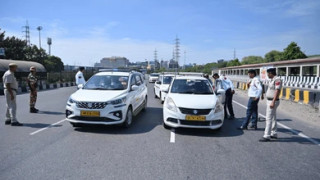
A collapsed house in earthquake (X/Thelovetoy)
New Delhi: Recent advisories from Japanese scientists suggest the country should prepare for a potential "megaquake" that could devastate infrastructure and cause widespread casualties. The warning highlights that while such an event could result in hundreds of thousands of deaths and damage infrastructure worth $13 trillion, it does not guarantee that a catastrophic earthquake is imminent. This comes after a significant 7.1 magnitude earthquake struck Japan on Thursday, triggering a tsunami warning along the southern coast.
The Japan Meteorological Agency (JMA) has issued a "megaquake advisory" indicating that a major earthquake in the future could lead to severe shaking and large tsunamis. Although the risk of a significant quake is currently elevated, this does not ensure its occurrence within a specific timeframe, as reported by AFP.
The advisory focuses on the Nankai Trough, a subduction zone situated between two tectonic plates in the Pacific Ocean. This 800-kilometer (500-mile) undersea trench, stretching from Shizuoka west of Tokyo to Kyushu island's southern tip, has historically experienced massive earthquakes with magnitudes of eight or nine approximately every century or two.
These "megathrust quakes" often trigger dangerous tsunamis along Japan's southern coast. Notably, in 1707, the entire Nankai Trough ruptured simultaneously, causing one of Japan's most powerful earthquakes and the last eruption of Mount Fuji. Subsequent significant megathrust quakes occurred in 1854, and another pair struck in 1944 and 1946.
Japan's government has estimated a 70 percent chance of a magnitude 8-9 earthquake occurring along the Nankai Trough within the next 30 years. In a worst-case scenario, such a quake could lead to 300,000 fatalities and $13 trillion in infrastructure damage.
Geologists Kyle Bradley and Judith A. Hubbard underscored the gravity of the situation in their Earthquake Insights newsletter, stating, "The history of great earthquakes at Nankai is convincingly scary." They noted that predicting earthquakes remains impossible, but the occurrence of one often increases the likelihood of subsequent events. They added, "A future great Nankai earthquake is surely the most long-anticipated earthquake in history—it is the original definition of the 'Big One.'"
In response to this threat, Japan is advising residents in quake-prone areas to take preventive measures such as securing furniture and locating nearby evacuation shelters. Many households maintain disaster kits with essentials like bottled water, non-perishable food, flashlights, and radios.
Despite the warnings, experts such as Bradley and Hubbard reassure that there is only a "small probability" that Thursday's 7.1 magnitude earthquake is a precursor to a larger event. They explained, "One of the challenges is that even when the risk of a subsequent earthquake is elevated, it remains relatively low." For instance, in California, there is about a five percent chance that any given earthquake could be a foreshock.













Copyright © 2025 Top Indian News
